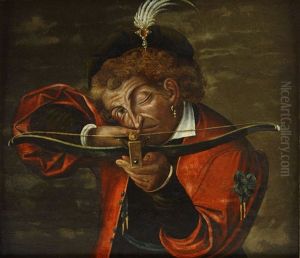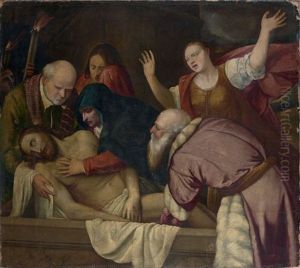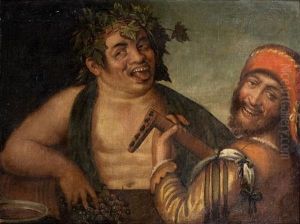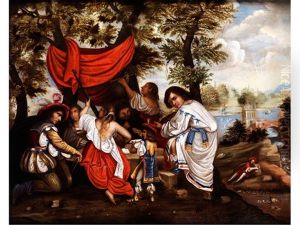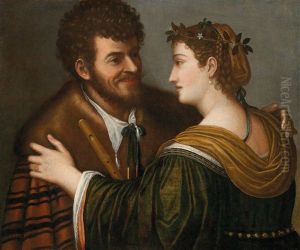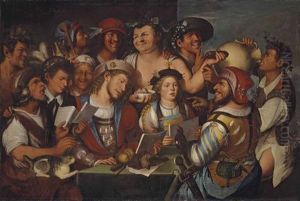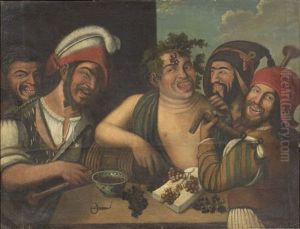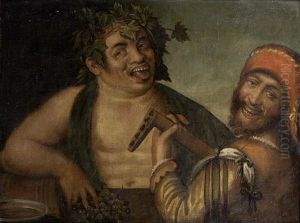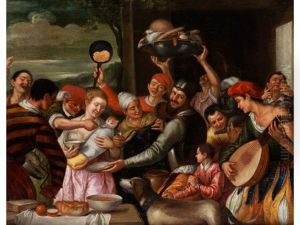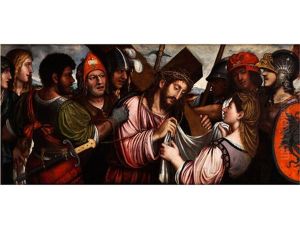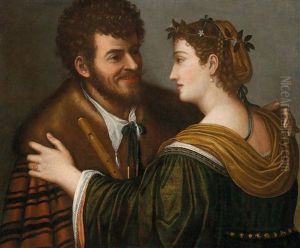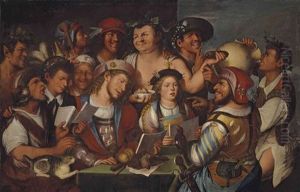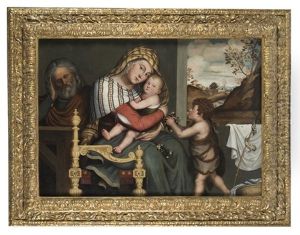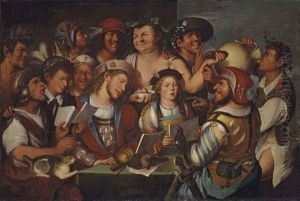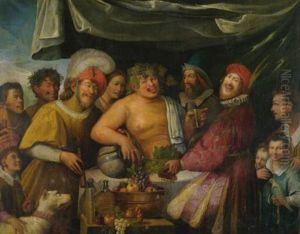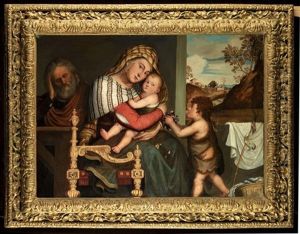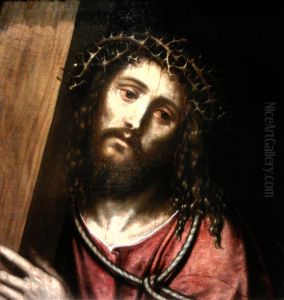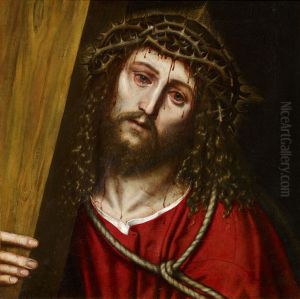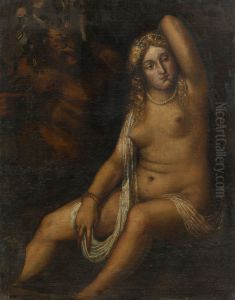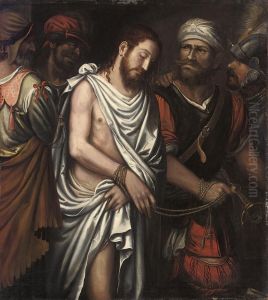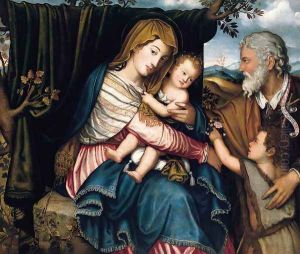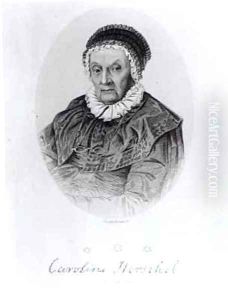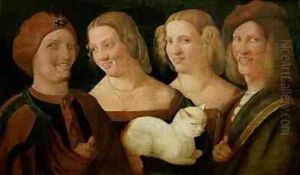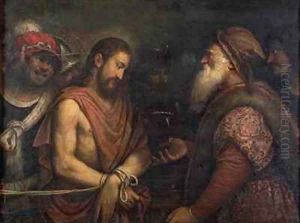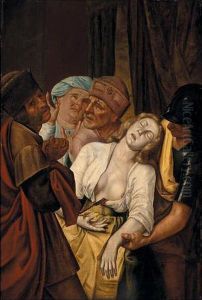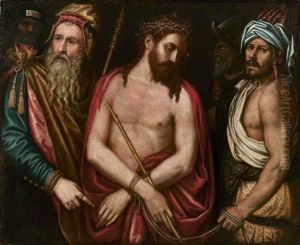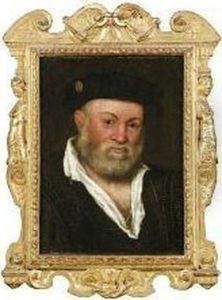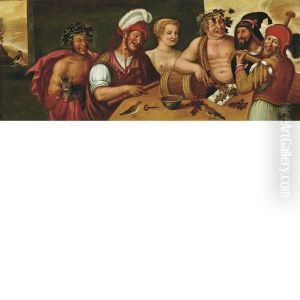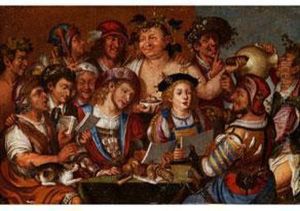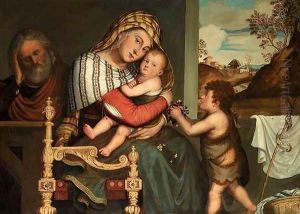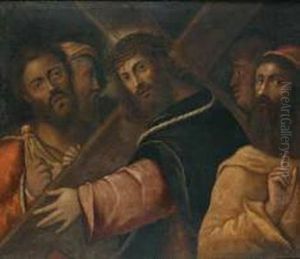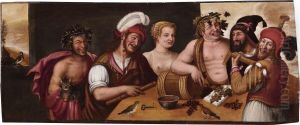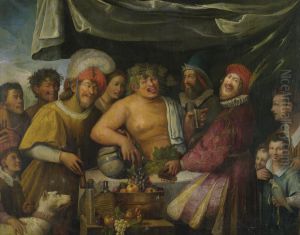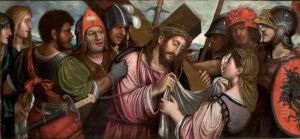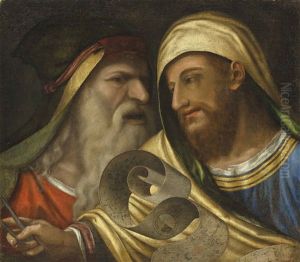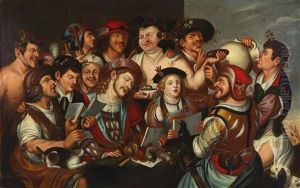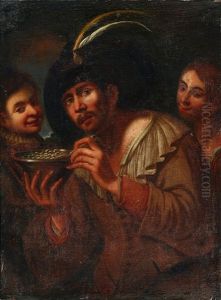Niccolo Frangipane Paintings
Niccolò Frangipane, sometimes spelled Nicolo or Nicolò and also known as Frangipani, was an Italian painter who lived during the late Renaissance period. There is uncertainty regarding his exact birth and death dates, with some sources suggesting he was born between 1540 and 1545, and died in 1597. Frangipane was active primarily in the Veneto region of Italy and is noted for his religious and historical paintings.
Frangipane's early life and training are not well-documented, but it is believed that he may have been influenced by the Venetian school of painting, especially by the works of Titian. Despite the lack of detailed records, Frangipane's style reflects the rich color palette and emphasis on light and shade that are characteristic of the Venetian Renaissance.
His works were known for their vivid detail and emotional impact, often capturing the spiritual intensity of religious scenes. While not as widely recognized as some of his contemporaries, Frangipane's paintings have been appreciated for their own merits and contribute to the rich tapestry of Renaissance art.
Throughout his career, Niccolò Frangipane contributed to the decoration of various churches and public buildings. Unfortunately, many of his works have not survived to the present day or remain attributed to other artists due to the lack of a distinctive signature style or comprehensive documentation. Nevertheless, some of his paintings can still be found in Italy, serving as a testament to his skill and devotion to the arts.
Frangipane's influence may not have extended far beyond his regional context, but his dedication to his work during the Renaissance period makes him a figure of interest to art historians and enthusiasts of Italian art. His paintings that do survive offer insight into the religious and cultural milieu of late 16th-century Italy and embody the transition between the High Renaissance and the emerging Baroque style.
